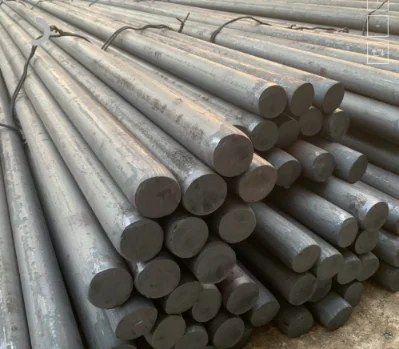Carbon Steel Pipe is super common in big industries. You spot it in oil and gas lines, water pipes, chemical plants, and even scaffolding on building sites. These pipes aren’t just about the metal. They follow strict rules to make sure they’re safe, tough, and last a long time. Those rules keep projects safe and make sure the pipes you buy work right.
Before we dig into the rules, let’s talk about a supplier folks trust. Qingdao Sunrise New Material Co., Ltd. is a global company dealing in steel and other metals. They help customers in over 100 countries, like Europe, Africa, the Middle East, and South America. They team up with big mills, use modern machines, and keep warehouses near China’s main ports. That means quick shipping. No long waits for urgent orders. Want to check their Carbon Steel Pipe lineup or other stuff? Reach their team. Buyers love their tight quality checks, fair prices, and steady supply. These fix the big worries contractors and sellers face when grabbing pipes for tough jobs.
Why Do Standards Matter in Carbon Steel Pipe Procurement?
When you buy Carbon Steel Pipe, you’re not just getting metal. You’re buying trust. Trust that it’ll hold up. Standards set the size, thickness, strength, and what’s in the steel. If a pipe breaks in a high-pressure gas line or flops in a boiler, things get bad. Think safety risks, project delays, or wrecked property. Standards like ASTM, API, EN, BS, and DIN cut those dangers. They make sure your Carbon Steel Pipe passes checks in world markets.
Think about it. You’re running a big job. A pipe fails. Workers are at risk. Money’s lost. Time’s gone. Standards stop that mess. They’re like a promise. The pipe’s good. It fits. It lasts. That’s why they’re a big deal.
What Are the Key American Standards?
American rules are known worldwide. Lots of projects, especially oil and gas, lean on them. If you’re supplying North America or places that follow U.S. ways, you’ll see these codes a lot.
ASTM A106
ASTM A106 is for seamless Carbon Steel Pipe built for hot jobs. Think refineries, power plants, or spots where steamy fluids flow daily. You see A106 pipes in boilers and big pipelines. It splits into Grades A, B, and C. Grade B is the go-to. It’s strong but doesn’t cost too much.
Why’s it popular? It handles heat like a champ. No cracks. No leaks. Perfect for tough spots. Buyers pick it for steady work at high temps.
ASTM A53
ASTM A53 covers seamless and welded Carbon Steel Pipe. It’s not just for hot stuff like A106. It works for water, air, steam, and gas at lower pressures. Builders use it for construction or machine work. It comes in Type E (welded with electric zap), Type F (welded in a furnace), and Type S (seamless).
It’s a jack-of-all-trades. Not too pricey. Fits lots of jobs. From water lines to scaffolds, it’s got you covered.
API 5L
API 5L is key for oil and gas pipelines. It has grades from Grade B to tough ones like X42, X46, X52, X60, and more. Higher numbers mean stronger pipes. Like, X60 is for long lines with big pressure. Your pick depends on line length, pressure, and safety needs.
This standard’s a big player. Oil moves miles. Gas flows fast. API 5L makes sure the Carbon Steel Pipe holds tight. No busts. No spills.
What Are the Main European Standards?
Europe has its own rules. They focus hard on safety and strength. These are big in Europe and places like Africa or the Middle East where European firms run projects.
EN 10217
EN 10217 is for welded steel tubes used under pressure. Think boilers, heaters, or plants that never stop. Chemical or energy spots love EN 10217. It’s tough for constant use.
Why pick it? It stands up to stress. Day in, day out. No give. It’s a safe bet for heavy jobs.
EN 10296
EN 10296 is for welded round pipes in machines or general work. You see it in cars, buildings, or gear where size must be exact. Buyers grab it for strong pipes that fit just right.
It’s about precision. No wobble. No miss. Perfect for jobs needing tight measurements.
What Are the British Standards?
British rules still matter a lot. Especially in building and car-making. They’re strict. Many global projects stick to them.
BS EN 39
BS EN 39 is for scaffolding pipes. Safety on build sites leans on these. Size and strength rules are tight. If scaffolding flops, workers get hurt. So BS EN 39 Carbon Steel Pipe is a must for contractors.
It’s about trust. Scaffolds hold lives. This standard keeps them steady. No risks.
BS 6323
BS 6323 covers welded and seamless steel tubes for cars and machines. Think vehicles, tools, or structures needing exact sizes. It gives peace of mind. Pipes are tough and spot-on.
It’s for builders who need both strength and fit. No guesswork. Just right.
What Other Standards Should You Know?
Beyond U.S., Europe, and British codes, know German and oil industry rules. They pop up in tech papers and global deals.
DIN EN 10217
DIN EN 10217 is Germany’s take on the EN pressure pipe code. It’s big in German-led jobs or places using German ways. Pick DIN EN 10217 Carbon Steel Pipe, and you dodge quality rejections.
It’s a safe pick. Meets tough checks. Keeps projects rolling.
API 5CT
API 5CT is for casing and tubing in oil wells. Grades like J55, N80, L80, C110, and P110 show up in drilling. Each grade fits different well depths and ground types.
Oil digs deep. This standard keeps pipes strong. No cracks. No fails.
How Should You Choose the Right Standard for Your Project?
Picking the right standard ties to the pipe’s job. Oil and gas lines? Go API 5L. Boilers or hot work? Try ASTM A106 or EN 10217. Scaffolding? BS EN 39 is it. Cars or machines? ASTM A53 or BS 6323 fits.
Check pipe wall thickness and grades too. For high-pressure jobs, SCH40 or SCH80 works. Tough spots or harsh liquids? Galvanizing or anti-rust coats help. A supplier with options for thickness, coatings, and standards saves time and worry.
Think about your needs. Long pipeline? Pick API 5L X60. Hot boiler? A106 Grade B. Building site? BS EN 39. Match the job. Check the specs. Ask your supplier. Get it right.
Why Should You Work With Reliable Suppliers?
Rules on paper are one thing. Getting Carbon Steel Pipe that matches is another. A good supplier backs pipes with certs from groups like TUV, SGS, BV, or RINA. They keep stock ready. Orders ship fast—sometimes in days. That’s big for tight deadlines.
Solid suppliers check quality hard. No checks? You might get pipes that look okay but fail tests. That means big costs. Delays. Headaches. A supplier who cares about checks keeps your job safe.
Pick one with a rep. Like Qingdao Sunrise New Material Co., Ltd. They test tight. Stock plenty. Ship quick. Your project stays on track.
FAQ
Q1: What is the difference between ASTM A106 and ASTM A53?
ASTM A106 is for high-heat jobs like boilers and power plants. ASTM A53 is for general use like water, gas, steam, and air pipelines.
Q2: Why is API 5L important for oil and gas pipelines?
API 5L sets rules for line pipes moving oil and gas long distances. Grades like X42 and X60 fit pipeline length and pressure.
Q3: Which standard is used for scaffolding Carbon Steel Pipe?
BS EN 39 is for scaffolding pipes. It has tight rules for size and strength to keep workers safe.
Q4: How do coatings improve the life of Carbon Steel Pipe?
Coatings like galvanizing, paint, or oil block rust and wear. They stretch pipe life and cut fix-up costs.
Q5: Where can you buy Carbon Steel Pipe that meets multiple international standards?
Qingdao Sunrise New Material Co., Ltd. supplies Carbon Steel Pipe under ASTM, API, EN, BS, and DIN standards. They offer fast delivery and certified quality for global buyers.








